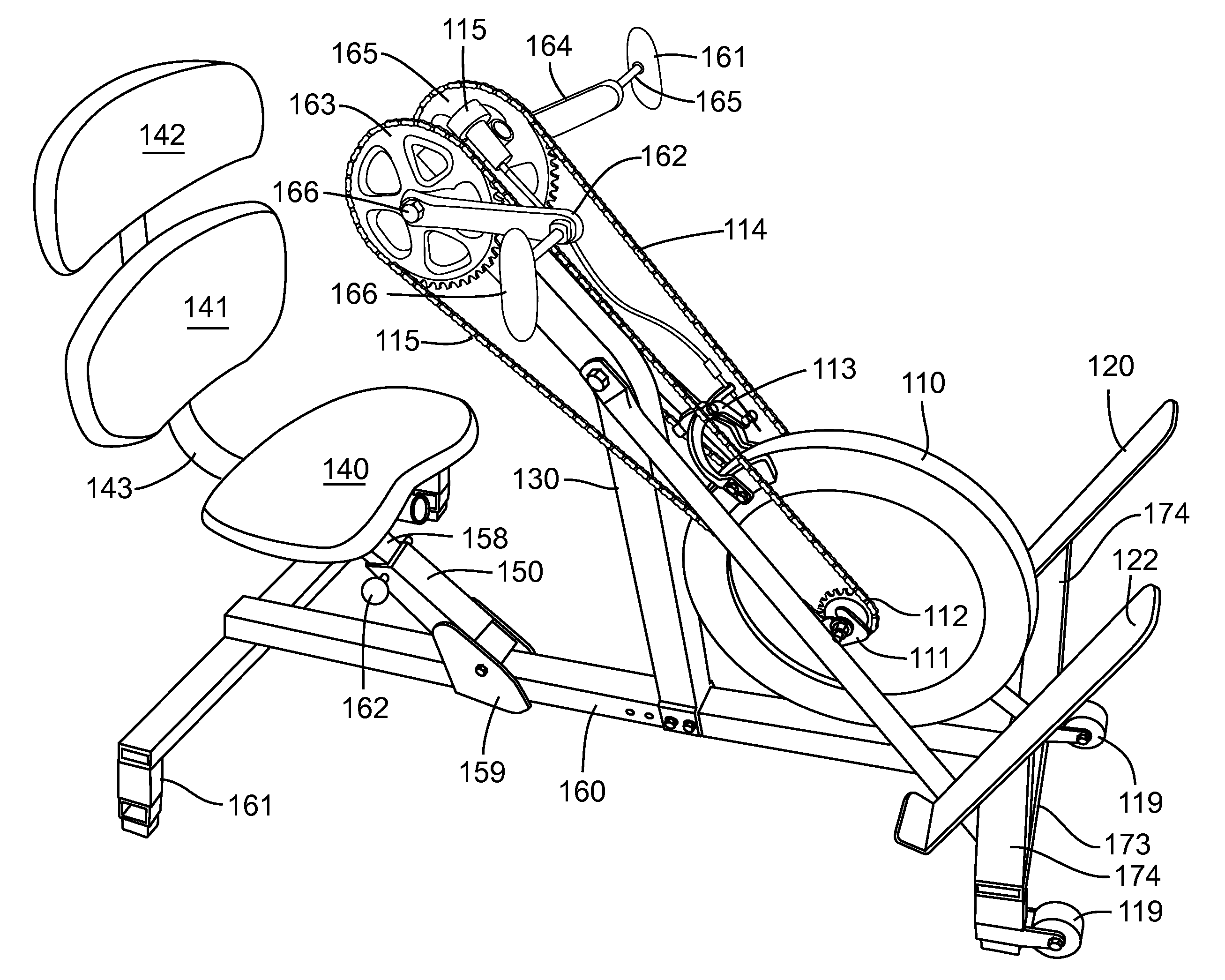Upper-body exercise cycle
a technology for exercise cycles and upper body, applied in the field of upper body exercise cycles, can solve the problems of not being suited to a spinning class setting, affecting the performance of the upper body, and affecting the overall body, so as to enhance the muscle development, and enhance the upper body spinning experien
- Summary
- Abstract
- Description
- Claims
- Application Information
AI Technical Summary
Benefits of technology
Problems solved by technology
Method used
Image
Examples
Embodiment Construction
[0030]The present design is a stationary upper body exercise apparatus, typically comprising a frame and components, i.e. pedals, crank arms, seat, chain drive and flywheel, affixed to a stationary frame typically positioned on a smooth surface, e.g. hardwood or concrete floor enabling a the operator to exercise his upper body in a similar manner to the operator of a stationary “spinning bike” configured to exercise the rider's legs but in the case of this invention configured to exercise the operator's upper body including the arms, upper and lower back and abdominals in a spinning type activity.
[0031]In essence, the present design allows the operator to carry out a spinning activity for the upper body by pedaling hand pedals which are attached to the distal end of crank arms resulting in the rotation of a large flywheel in an effort to develop upper body strength and cardiovascular conditioning.
[0032]In addition, the present design may include wide or narrow crank arms attached to...
PUM
 Login to View More
Login to View More Abstract
Description
Claims
Application Information
 Login to View More
Login to View More - R&D
- Intellectual Property
- Life Sciences
- Materials
- Tech Scout
- Unparalleled Data Quality
- Higher Quality Content
- 60% Fewer Hallucinations
Browse by: Latest US Patents, China's latest patents, Technical Efficacy Thesaurus, Application Domain, Technology Topic, Popular Technical Reports.
© 2025 PatSnap. All rights reserved.Legal|Privacy policy|Modern Slavery Act Transparency Statement|Sitemap|About US| Contact US: help@patsnap.com



